
|
| Accept Cookies | Customize | Refuse Cookies |
Fabio1951 www.juzaphoto.com/p/Fabio1951  |
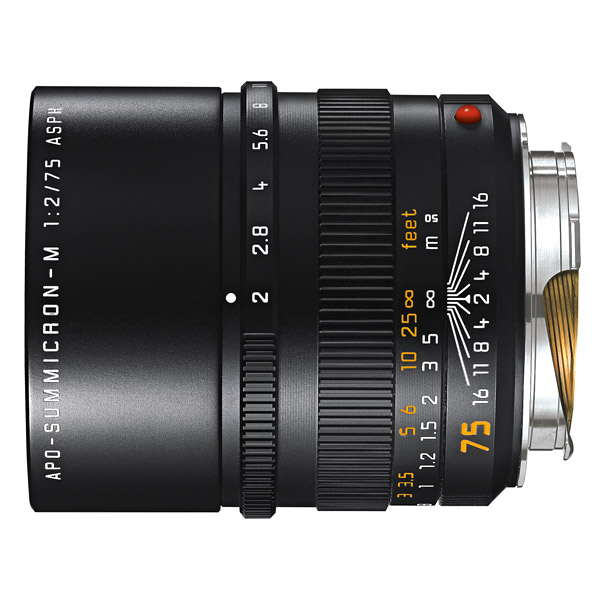 | Leica APO Summicron-M 75mm f/2 ASPH Pros: Exemplary construction, precision in the rotations of the two rings, overall optical quality Cons: A bit heavy in relation to the M body Opinion: I have been using it for almost 2 years with full satisfaction with M digital bodies. The overall optical quality (sharpness, distortion, etc.) is at the highest level, as per tradition, even with M11. The color rendering is similar to the standards of the best optics of the brand and satisfies me in full. The construction is exemplary and so is the ergonomics. It is the ideal complement to the 35 Summicron, a pair of molTo optics suitable for reportage. sent on July 04, 2022 |
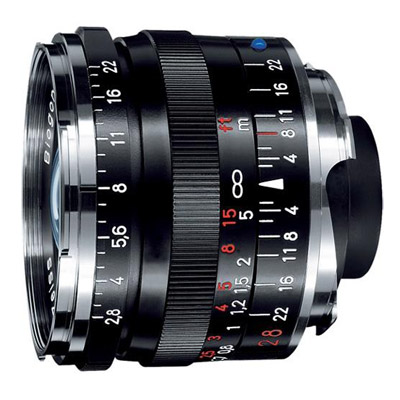 | Zeiss ZM Biogon T* 28mm f/2.8 Pros: optical quality, very low weight and dimensions, natural colors, flare resistance, low price Cons: the original hood must be bought separately Opinion: I have been using it on the Leica M10R digital for more than a year and it has given me enormous satisfaction for its overall optical quality and portability; weight and dimensions are contained but this does not come at the expense of the overall optical quality, really good at intermediate apertures (5.6 and 8), a little less at f: 4 and especially at f: 2.8 where it has a certain loss of sharpness at the corners of the frame. This limit makes it a perspective suitable for landscape and architecture rather than for journalistic reportage and on any other occasion in which it is necessary to shoot at very open apertures; in this field from direct experience I can say that the Summicron 28 f:2 latest version clearly prevails. Where there are no such needs, the Zeiss (moreover much less expensive) is a very valid alternative to the Elmarit 28 f:2.8 and to the same Summicron 28 f:2, compared to which the intermediate diaphragms has little or nothing to envy, especially in the center and in the middle areas of the frame. A note of merit, finally, to the resistance to reflections and color rendering, very natural. sent on June 14, 2022 |
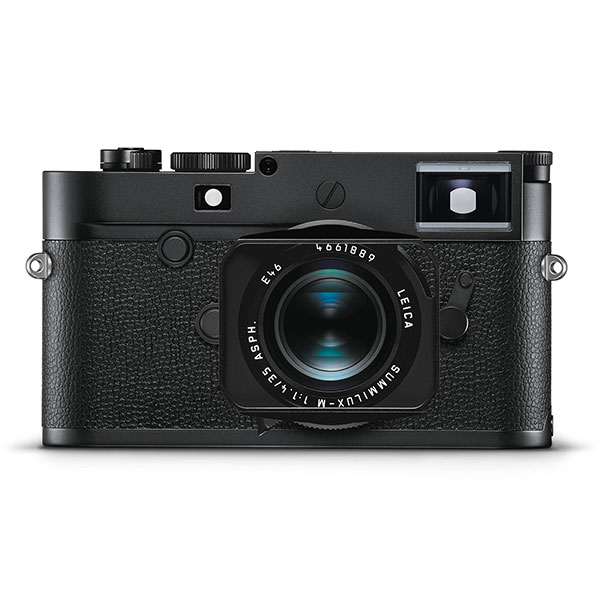 | Leica M10 Monochrom Pros: sharpness, noise, dynamic range Cons: constraints resulting from the choice of a monochrome sensor and the rangefinder system; high price Opinion: I have owned it for almost a year and I have already written a lot about this machine in the many discussions that appeared here on the forum in which many have defined it as a useless tool intended either for citrulli or eccentrics in love with a status symbol. I start with the objective criticalities. It is not a machine for everyone, beyond the high price, because of its limitations that as such should be well known to the potential buyer. The manufacturer wanted to put on the market a digital camera inspired by what was the classic M film and then you shoot only in B & W: if you happen to want to make a color shot you must have another camera. In addition, working only on the brightness channel to create contrast between the different colors of the scene shot may require the use of color filters: in post-production you can not use the color mixer that all the softwares have to customize the conversion to the B & W. You also need great care in the exposure: if the highlights are burned you can not remedy as you do, at least in part, with the RBG sensor when at least one of the channels still has detail. Finally, it is a rangefinder camera, without autofocus, and many do not like this at all. I now turn to the advantages that for some and first and foremost for me coincide with those that to others seem to be defects. The rangefinder, the dexterity, the setting of the machine, the quality of the optics are congenial to my way of photographing. Then there is the rendering of the file, unattainable for those who limit themselves to converting to B&W starting from an RGB sensor. In particular, the recovery of the most closed shadows is absolutely incredible. The noise at high ISO is much less than the RGB sensor. The sharpness is very high. The tonal scale is very extensive, although it may seem flat if you do not intervene properly during the processing of the file. You have to be good with PS, have time and patience, and above all know the most advanced techniques to intervene locally with selections and masks, as on many occasions, especially in the landscape, otherwise the photo would be rich in many shades of gray, but inexorably flat and moscia. In conclusion, a purchase that must be well thought out and that in my opinion is advisable only to those who shoot only or in great prevalence in B & W. sent on February 10, 2022 |
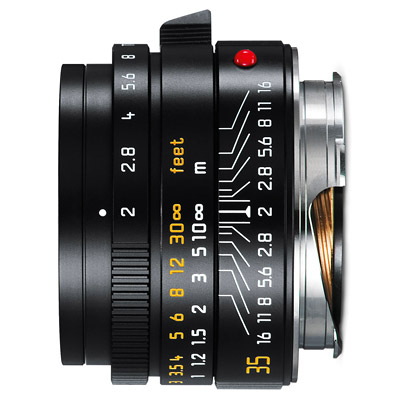 | Leica Summicron-M 35mm f/2 ASPH (2016) Pros: excellent sharpness, minimum weight and size, very efficient native hood Cons: nothing Opinion: I have owned this lens for almost a year and use it on the Leica M10 (R and Monochrom). Several years ago I had its predecessor when I had the Leica M6 and this new version does not disappoint. The sharpness is also excellent at the edges, excellent resistance to reflections; vignetting and distortion almost non-existent. Its small size makes this lens perfectly integrated into the M10 body. The focus ring has a more than fair resistance. Highly recommended for those looking for a very eclectic 35mm, therefore suitable for all situations (the brighter Summilux, also wonderful, is probably more specific for those who usually work at very open diaphragms; I mainly do urban landscape and architecture and I found myself better with summicron). sent on February 05, 2022 |
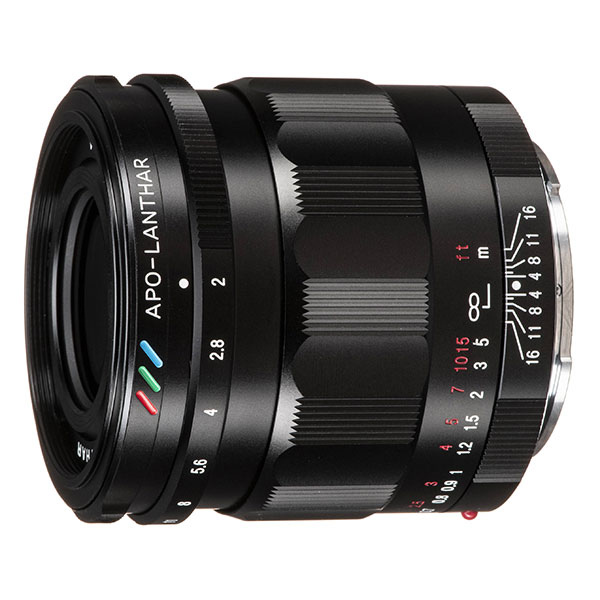 | Voigtlander Apo-Lanthar 50mm f/2 Aspherical Pros: extreme sharpness up to the edges accompanied by a faithful and neutral rendering of the different shades. Cons: the hood is missing, to be purchased separately at an absurd price Opinion: I took several months ago this 50mm to accompany the Zeiss Sonnar 1.5 for my Leica M10R and M10 Monochrom. The sharpness of absolute excellence and truly extreme makes it inadvisable in female portraits, in which the Sonnar excels. Magnificent, however, to enhance the texture. In the urban and natural landscape it has an excellent yield, both as regards the detachment of the floors and the general microcontrast. The color rendering is clean and neutral but different from that of the Leica optics I own. Absolutely extraordinary pairing with the Monochrom. Unfortunately, this lens has a weight and dimensions a bit excessive for machines such as the Leica M, covering a part of the optical viewfinder. Serious the absence of the hood that in the original version has a disproportionate price. Compared to a friend's Summicron 50mm f:2, it is even sharper, especially on the edges and at open apertures. Highly advisable, but it must be taken into account that its merits can be defects if, depending on the subjects taken, softer yields are preferred. sent on January 30, 2022 |
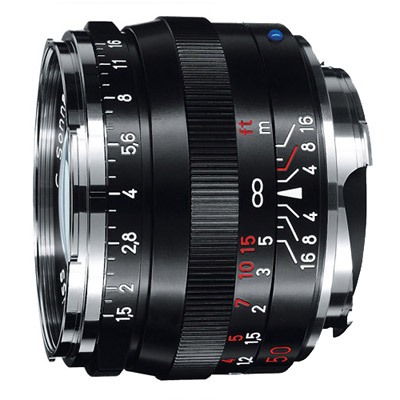 | Zeiss ZM C Sonnar T* 50mm f/1.5 Pros: Compactness and weight, three-dimensionality, construction quality, softness of the blurred, resweath to reflections Cons: Lampshed to buy apart and at a high price; focus variability at short distances and more open diaphragms (up to f:2.8) Opinion: I share piefranco Fornasieri's thought; it is an optics that may or may not please you at all or, vice versa, excite. Zeiss itself has issued an official note inviting photographers to take into account the particular characteristics of this objective and advising those suffering from extreme sharpness from edge to edge on board the frame the purchase of the 5omm Planar, being instead advisable the Sonnar to lovers of portrait and any other genre in which a progressive and particularly soft blurred yield can be served. In fact, this lens is not the best for architectural photography, nor does it excel when shooting flat surfaces such as walls, posters, etc., as the edges of the frame, even closing the diaphragm at f:8, are lower in sharpness than the center (5.6 to f:11 you notice less, of course). But when it is important to make the three-dimensionality of the subject, in portraits as in street photography, it ensures an excellent, almost magical rendering. It reminded me a lot, in this respect, of the Nikkor 58mm f:1.4. With regard to the variability of the focus plan to the various diaphragms, a problem also known, using the rangefinder it is necessary to make tests and with experience it becomes easy to remedy. With the EVF viewfinder, moreover, using peaking focus at the actual diaphragm of work, the problem does not even exist. Finally, the resistance to reflections, the extreme compactness and lightness of this optics, whose color rendering is completely consistent with the Zeiss specifications, are commendable. sent on May 31, 2021 |
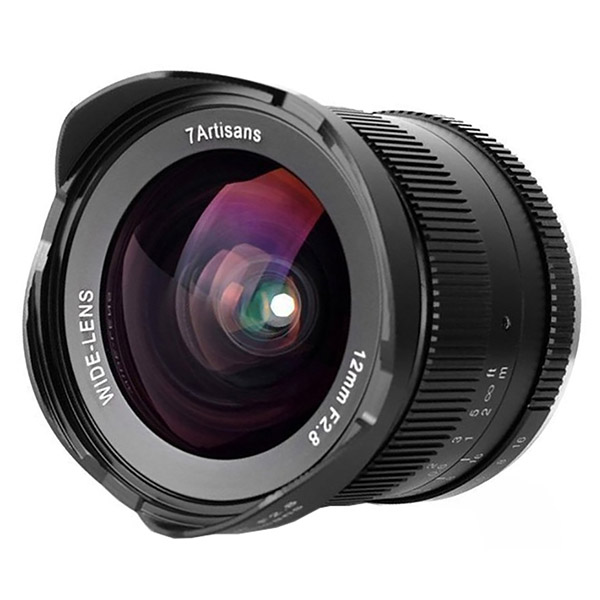 | 7artisans 12mm f/2.8 Pros: Construction, optical quality, price, weight Cons: Tendency to spin in backlit situations Opinion: I've been using it on Fuji for almost 2 years and it has given me a lot of satisfaction. The sharpness is more than good, even at the edges to the intermediate diaphragms. Very well controlled distortion. Vignette not excessive. Excellent construction. In the face of the 8-16mm Fuji succumbs, but without disfigurement. Recommended when you want to walk or ride with a small set in tow. sent on August 31, 2020 |
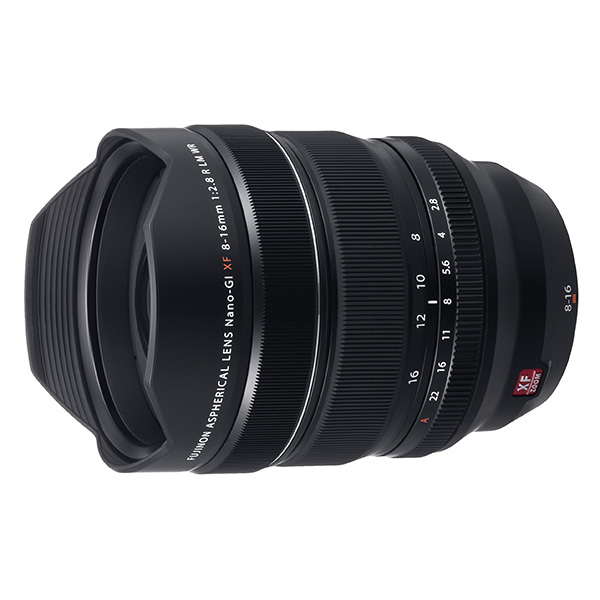 | Fujifilm XF 8-16mm f/2.8 R LM WR Pros: Overall above-average optical quality, unimpeachable construction Cons: High price, weight and footprint Opinion: I have had this zoom since the beginning of the year to replace the 10/24mm. This optics is of the upper class both for realization and for optical quality that I would call superb. On the other end, weight and footprint are important and must be taken into account at the time of purchase. The price is also high, although in line with the competition. Recommended for landscape and architecture. sent on August 20, 2020 |
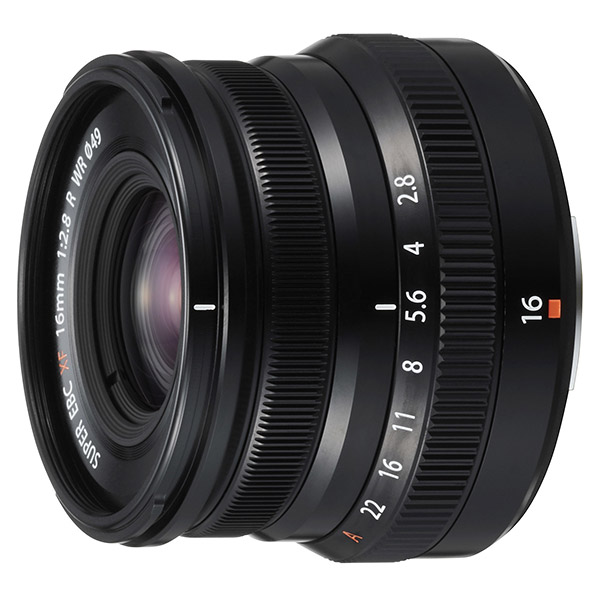 | Fujifilm XF 16mm f/2.8 R WR Pros: size, weight, sharpness Cons: brightness not high, but that's what you put into account at the time of purchase Opinion: I've had this vision for just over a year. For a couple of months he lived with his older brother, brighter, then I preferred to keep this, having considered it more suitable for my needs because of its compactness and lightness. I use it on the X-Pro along with the other fixes in the f:2 series. After all, the diaphragms that I use today (from 5.6 to 11) is completely equivalent to 16mm f:1.4, in all respects, which I have seen after many and many comparisons between my two 16mm. Photographer since 1968 and despite having owned many machines and optics, even very expensive, I have never understood what is the magic or the soul of a lens that, for me, is and remains a metal barrel (today many are plastic) with inside lenses that have the function of returning with fidelity and precision the scene between the viewfinder. This little 16mm does its duty, very well for what I need, and that's enough for me. Besides it costs the right (paid new 380 euros ). If the intended use was that of reportage in dark environments, then I certainly suggest the 16mm f: 1.4. In my kit I also have the 16/80mm and the 16/50 f:2.8. Compared to the small guy in question, the zoom pro is very similar while the larger zoom gives a little to the edges at T.A. But in my opinion the comparison with the zooms, bulky and heavy, does not hold up. With the X-Pro it is more logical to prefer compact optics, with zooms I see better X-T or X-H. sent on August 17, 2020 |
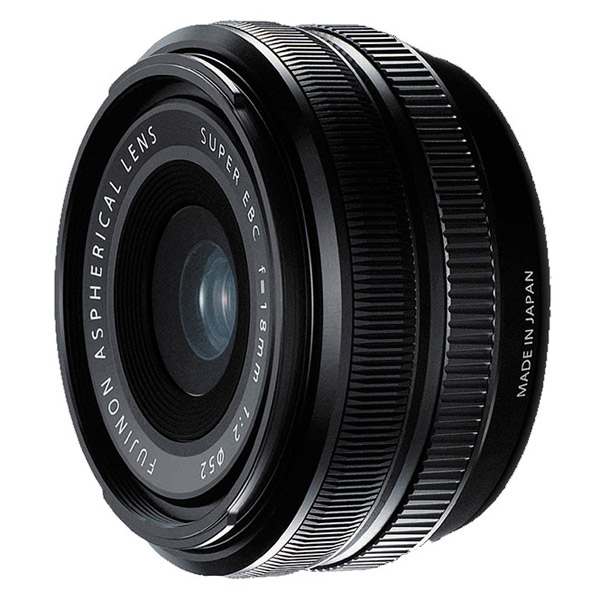 | Fujifilm XF 18mm f/2 R Pros: compactness, lightness, optical quality, lampshade Cons: Soft edges up to f: 2.8 Opinion: I have had this vision for several years and it has always given me great satisfaction. I used it mainly with X-Pro in reportage photography and dynamic street, but it has also done its duty in landscape (field where it is preferable to use 8/11 diaphragms in order to ensure a good yield at the edges). I use little af, preferring the MF whenever possible, but also in this aspect I was always satisfied. The noise of the moped is not the best, but it can be tolerated in the face of the overall quality of the photographs taken with this lens, also not too expensive (especially if purchased used). sent on March 20, 2020 |
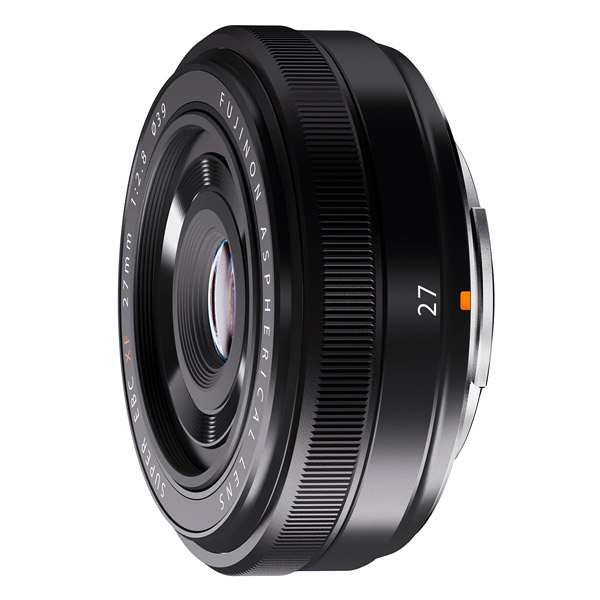 | Fujifilm XF 27mm f/2.8 Pros: Exceptional sharpness, compactness, lightness Cons: lack diaphragmmi diaphragm diaphragms Opinion: I have and have been using this lens for several years, both with Fuji Pro and X-E. It has never disappointed me and integrates together with 18/2 and 50/2 my ideal kit when I want to use a very light and easily transportable equipment. The 40mm focus I never felt sorry for and I'm completely comfortable with it. The sharpness is very high and the files have an excellent overall quality in every respect. I accompanied it with a very small but effective metal lampshade, made in Germany, Heliopan Digital E39 https://www.amazon.it/dp/B00B531C5I/?tag=pric-trck-449-21&creative=23390&creativeASIN=B00B531C5I&linkCode=df0&ascsubtag=Cj0KCQiAkePyBRCEARIsAMy5ScvCZ1Sz4R2yaHTL0m2FnX5oXjbxSHNGvz--nrXLXF39bxrKZhzErrUaAtUQEALw_wcB&th=1 Autofocus is more than decent. The only downside for me is the absence of the diaphragm diaphragm diaphragm. For the rest it is absolutely advisable as long as used cum grain salis, that is, in the knowledge that it is not very bright. sent on February 28, 2020 |
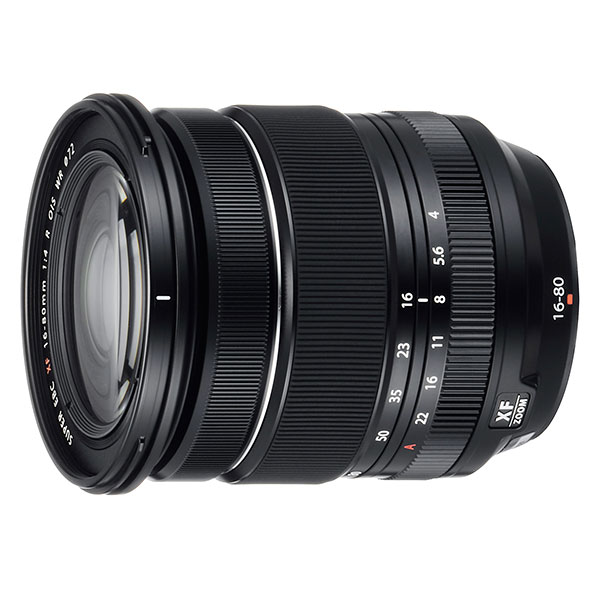 | Fujifilm XF 16-80mm f/4 R OIS WR Pros: Compactness, solid construction, 5x excursion, WR and OIS, Cons: button absence on the lens to insert or undock the OIS Opinion: I had the opportunity to have the optics (a demo) on trial for a week thanks to the availability of my trusted shopkeeper. The first tests were not exciting and many photos were completely blurred (or moves?). Then the firmware update (1.02) solved every problem. I then purchased the optics, which gave me performance consistent with the demo tried. In my opinion it is a good all-rounder goal, able to give the different focal points more than dignified results, sometimes excellent (if you use central diaphragms, from 5.6 to 11). In my opinion it guarantees better results than 18/55mm, at least in my case, which I have consequently resold. I have many fixed goals and I can say that they certainly guarantee a higher sharpness, at least to the more open diaphragms; but being a 5x zoom this is physiological and, of course, you have to make informed choices depending on the different photographic situations to deal with. Sometimes it may be preferable to have with it a good zoom 5x light and versatile like this 16-80mm which, I must say, has already given me several satisfactions. Finally, I found the stabilization system very efficient and I very much liked the reappearance of the diaphragm diaphragm diaphragm. The construction is in Fuji's usual standards. Recommended. sent on February 08, 2020 |
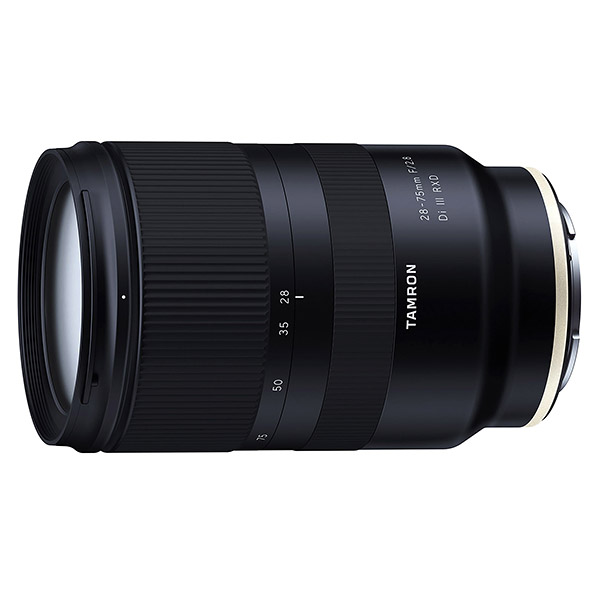 | Tamron 28-75mm f/2.8 Di III RXD Pros: good sharpness in the middle of the frame, price Cons: very poor sharpness at the edges, clutter, lampshade, poor resistance to reflections Opinion: I was able to try this lens for a week on Sony A7RII. I was very disappointed especially for the poor quality of the edges, in the face of a sharpness in the center more than discreet. I do not agree with the enthusiastic reviews that are read here on the forum and I doubt that there is in the production there is a certain lack in quality controls I found feedback on my negative opinion in the review made by Photozone, where the optics did not go further a modest score of 2.5. https://www.opticallimits.com/sonyalphaff/1064-tamron2875f28e?start=1 If this is the case, it seems to me that it is possible to make a decent use only in the street, but certainly not in the landscape and in the filming of architecture. sent on August 22, 2019 |
 | Nikon Z 24-70mm f/4 S Pros: Sharpness, lightness, rapidity in focus Cons: Nothing to plead Opinion: I own it from November 5, 2018 and now I can say I know him well enough. I use both Z7 and Z6. Its flaws, that is the limited focal length and the non-elevated brightness, are not really such, being characteristics already known before the purchase and functional to the lightness, compactness and sharpness of this optics. Its merits are the last features I mentioned, to which I would add a good speed in the focus. It can be used with equal satisfaction on both Z6 and Z7. Highly advisable the purchase with the kit because of the price much more affordable. In the past I had its predecessor for Nikon SLR cameras (not the VR) and the newer Tamron VC, but no doubt the 24/70 S is superior to them, especially for the edge rendition. sent on May 07, 2019 |
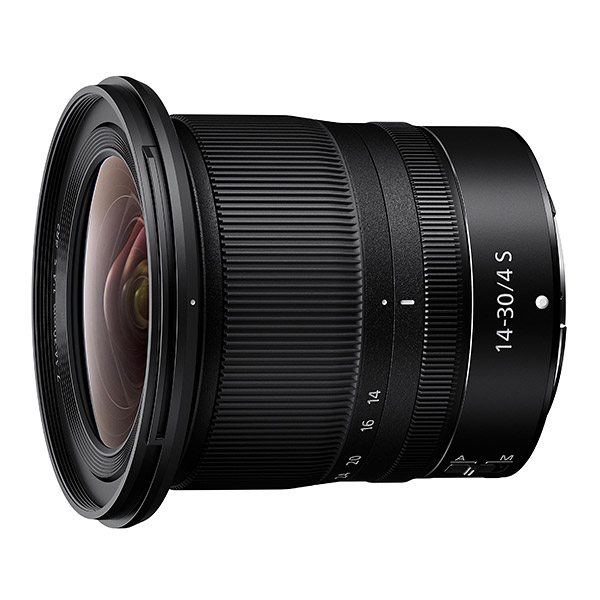 | Nikon Z 14-30mm f/4 S Pros: sharpness, compactness, lightness, construction Cons: nothing to be noticed, except for the not-high brightness, which is well known at the time of purchase Opinion: I only withdrew this objective yesterday and it is obviously too early to assess it with full knowledge of the case. At the moment, after using it today with the Z6, the impression is great, so much so that it does not at all regret the 14/24 that I have owned previously. Construction and appearance are similar to the 24/70 f:4, compared to which this lens looks even more compact and light. I reserve the right to try it thoroughly also with the Z7 and to integrate these first impressions that, I repeat, for now are very good, even in the sharpness. UPDATE ON 19/07 After almost 3 months I can confirm the first impressions. The optics, which I use on both Z6 and Z7, are very sharp on average for all focal points; the maximum yield is reached, on my specimen, around 20/22 millimeters with diaphragm F. 8. The yield at the edges remains always good and I cannot agree with the negative reviews of some reviews such as that of DxO concerning the modest engraving of this optics (there are others of the opposite sign), in my opinion very well aligned with that of 24/70 f:4 I also own. I can't say anything about any serious disparities in yield between the different specimens produced, as I have read in some reviews. If that were the case Nikon would not make us a good figure (but it would certainly not be the first: I will never stop regretting the glorious times of metal Nikons like Nikkormat, F, FM). sent on April 27, 2019 |
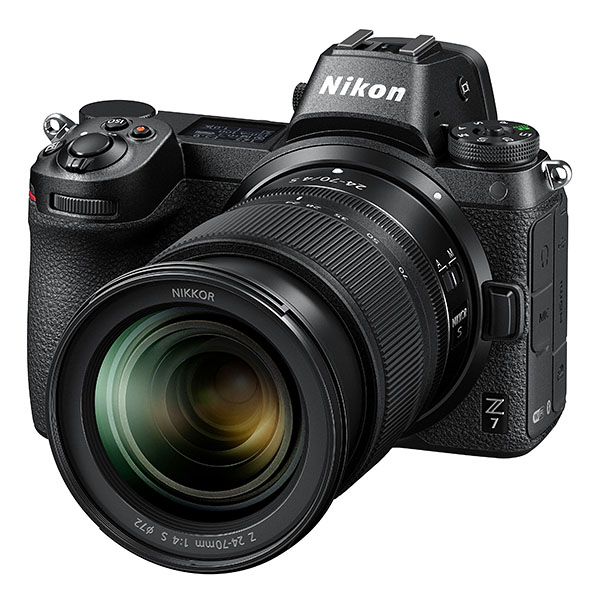 | Nikon Z7 Pros: compactness, weight, robustness, manual focus Cons: Battery life not at the height of Nikon SLR cameras Opinion: I have this machine for about a month, having flanked it with my Nikon SLR cameras, Df, D750, D850, which I share with my daughter (who is excited about this new mirrorless). The Z7 goes to my personal notice as the D850, at least for those that are my needs (in my life I have never used the autofocus except with the center point and AF-S, and not even the burst shot). On the results plan I therefore consider them equivalent (also as for dynamic range, at least so far I have not found banding in the recovery of Shadows). The Z has the advantage of lightness (for me rather important) and stabilization, the 850 that of the viewfinder that, as I think, it gives back contrasts and blurred much better. Of course, I think that in time I would sell the D850 and invest on new optics for the Z that will come out later. I took 24-70 and 35 and they go very very well. I use with satisfaction also some Ais, exploiting the ease of the MAF allowed by the electronic viewfinder. Overall I am convinced that the mirrorless system is destined to assert itself more and more. The single card for me is not a problem, while the battery in my opinion should be upgraded. sent on December 05, 2018 |
 | Nikon 135mm f/3.5 Ai Pros: Construction of other times, excellent sharpness, compact and lightweight, built-in lens hood Cons: Minimum focusing distance a bit high (1.3 m) Opinion: I was fortunate enough to find one at a ridiculously high price and in excellent conditions of use and I did not let him escape, mindful of his surrender when I had the Nikon FM. It has excellent sharpness and color rendering, is compact and robust, lends itself to many genres, including the landscape, always giving great images. Obviously requires some attention in the focus. I use it on Nikon Df with great satisfaction and Goduria. sent on October 18, 2018 |
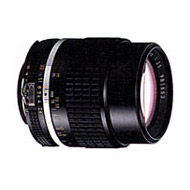 | Nikon 105mm f/2.5 Ai-S Pros: Excellent sharpness, construction of other times, light, compact and equipped with built-in hood Cons: I do not see, except of course the lack of autofocus Opinion: I use it on Nikon Df, with which it marries perfectly also from an aesthetic point of view. Very sharp, with a rendition of the excellent color and with a pleasant blur has nothing to envy to the most modern optics. It lends itself excellently to both the portrait and the street, although it requires a little attention in the focus. It is at great price on the market of the used (I took it from a nice user of the forum that I thank again). sent on October 18, 2018 |
 | Nikkor 85mm f/2 AI Pros: Compact, light, very sharp, excellent construction Cons: I do not see, except of course the lack of autofocus Opinion: I use this lens on Nikon Df, with which it marries beautifully. It lends itself very well to different genres, such as portrait and reportage. Built according to the standards of excellence of the time has an almost moving yield, given the Veneranda age. sharpness, color rendition and blurred are commendable. I also have the Tamron G2-equal focal which is higher as to sharpness and is also stabilized, but weighs almost twice as much and has a noticeable footprint. But the old Ai Nikon, when called to work (that is, when I need discretion and lightness) still fulfils its duty and does not disfigure at all, allowing first order shots. I also have the 105/2.5 Ais But I think it's more or less the same level as this 85mm. It is used at very affordable prices. sent on October 18, 2018 |
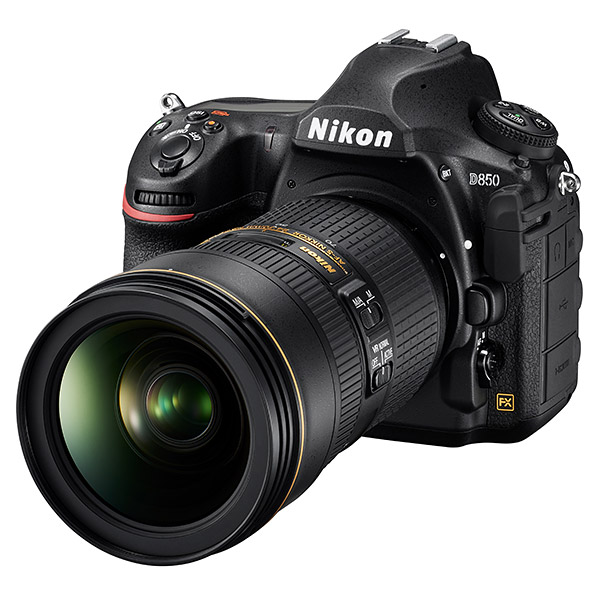 | Nikon D850 Pros: Accurate construction, exceptional sight, versatility Cons: Requires optics pro, but it's obvious in these resolutions Opinion: I sacrificed one of my two Df, having decided to resume printing in large format. In the past I had the D810, but I preferred to make the jump to the new model that has replaced it, rather than resume it used, although much more expensive. Compared to 810 were made many steps forward. This has incredible versatility and can be used D850 profitably in the most varied photographic genres, always with notable achievements. The viewfinder is sensational and, at least for me, is alone a plus essential (I can't stand the vision offered by the electronic viewfinders). I will not dwell on other improvements, of which much has been said already. A great camera! Update: Nikon with D850 introduced the ability to resample down raw files. In practice, the user can choose whether to get photos with the long side of Pixels 8256 (native resolution), 6192 and 4128 (resampling in car). This faculty of resample down is ensured even when you opt for a crop with a factor of 1.2 or 1.5, or you choose the different ratio of 5:4 or 1:1. Actually have been cast much doubt on the quality of ricampionamenti in question entrusted to an algorithm of which little is known, except that the color depth drops from 14 to 12 bits. I wanted to do a test, taking 5 different images in raw both 8256 Pixels that 6192 Pixels, resampling with PS (Bicubic Sharper "algorithm) the largest file in order to bring it back to the same size as the other (i.e. 6192 Pixels). In all 5 shots I detected the same characteristics, namely: 1) in both files the noise decreases, but very similar 2) there is no tonal variations, exposure, contrast, or else 3) the sharpness of files resampled with ADOBE has always been better algorithm 4) even applying to files resampled by car (and only those) an unsharp mask, the sharpness of images resampled with PS remains better. In conclusion, although in some situations it may be useful to have a file lighter, I think should give up this opportunity and resample with PS, rather than by car. Unless you need the utmost clarity. At least that's the belief that I made based on the 5 test shots I did. sent on April 11, 2018 |
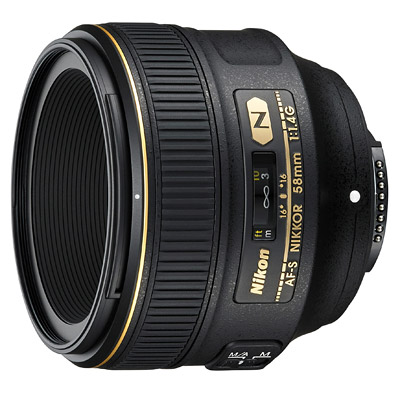 | Nikon AF-S 58mm f/1.4 G Pros: Superb yield. Lightness. Cons: High price, the aperture ring is missing, being an AFS Opinion: I have been using it for over a year on 16 and 36 megapixel full frame sensors; with both the overall yield is superb: high sharpness, open shadows, blurring fairytale, soft colors and never pacchiani. After trying it I sold the Zeiss milvus of the same focal length, definitely sharper at the edges to wider openings, but not up to the Nikon in terms of transparency and color rendering. In practice all those to whom I showed the test photos made with the 2 objectives preferred those taken with Nikon. sent on March 28, 2018 |
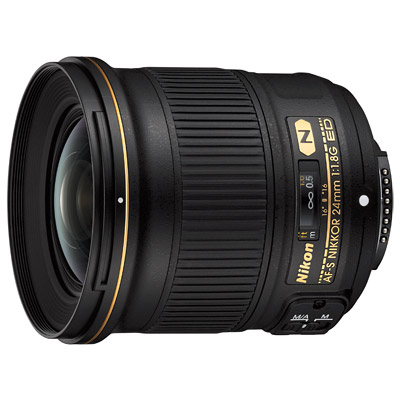 | Nikon AF-S Nikkor 24mm f/1.8 G ED Pros: Sharpness, weight. Cons: Construction and tactile sensation Opinion: I've been using it for about a year on Nikon full frame, with a 16-sensor and a 36-megapixel sensor. With both the sharpness is very high starting from f: 2.8.rnA my opinion provides the highest quality af: 5.6 / 6.3. The blur is sufficiently pleasant. Its lightness is admirable. The autofous of my sample is precise and fast. Good distortion correction and in the norm that of CT vignetting. the only drawback for me is the construction that will also be robust, but that certainly with that plastic material does not return the pleasant sensations that the old Nikkor gave me. But today things are like that and there is no longer the aperture ring. sent on March 28, 2018 |
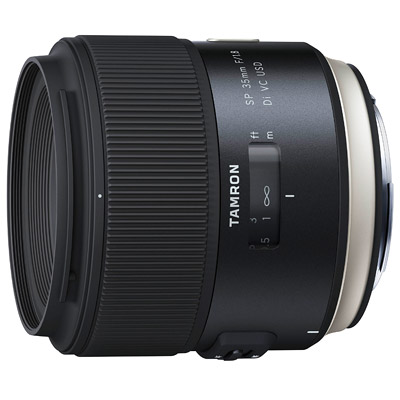 | Tamron SP 35mm f/1.8 Di VC USD Pros: excellent sharpness, very effective stabilization, accurate construction Cons: nothing Opinion: I have had this lens for several months and I use it on Nikon FF. Tamron has done a good job: the object is solid, has the right balance once mounted on the machine, the ferrules run smoothly, allows a very close focus, the autofocus is very reactive and precise, the resistance to reflections it's excellent. As for sharpness, it is more than good for intermediate diaphragms; at maximum opening the edges lose sharpness, to recover it from f: 2.8 onwards. It is a valid alternative to the Nikon of equal focal length and brightness. Recommended. sent on March 24, 2018 |
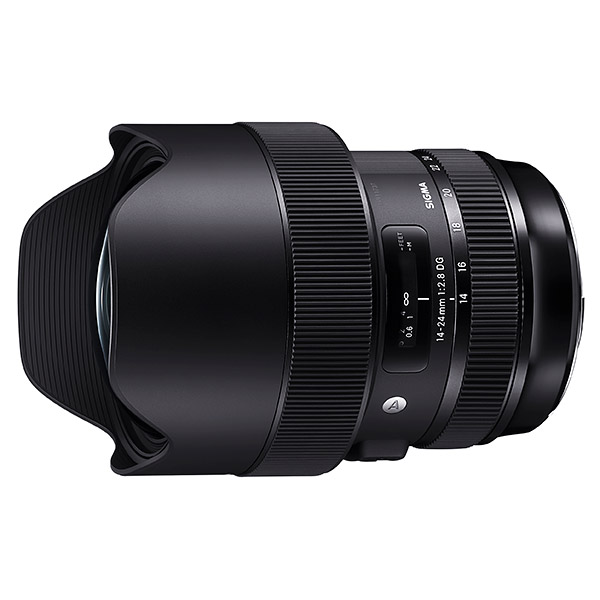 | Sigma 14-24mm f/2.8 HSM Art Pros: Sharpness, construction, distortion correction Cons: Poor resistance to reflections, weight and size Opinion: Purchased today and immediately tested and also compared with 14 Samyang and 21 distagon zf2; the first impressions are excellent, but I reserve a more conscious judgment in a few months. For now I can say with confidence that the sharpness is excellent, even at the edges, a bit 'at all focal lengths, even higher than that provided by the 21 Zeiss; the objective appears solid and well made, the rings run smoothly; the correction of the distortion appeared to me very good (in this respect the Samyang is shredded). The weight is considerable and the overall dimensions must also be considered. The real neo I found it in tests carried out with strong lateral light, when I checked an obvious reflection. In the same situation the Zeiss has endured very well, the Samyang a little better. In the past I had Nikon 14-24 who had the same problem; in any case, both lenses have an imposing and protruding front lens. sent on March 22, 2018 |
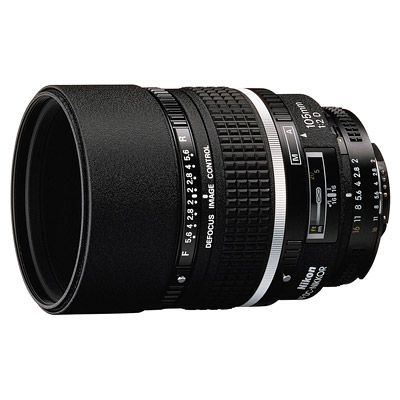 | Nikon AF 105mm f/2 D DC Pros: sharpness, particular focus, construction, aperture ring aperture, maneuverability Cons: I can not find it, it's worth all his money Opinion: Taken used, like new, with packaging, etc., I use it on Nikon Df with great satisfaction and not only in the portrait, field in which excels for the ability to make very particular focus once understood, through experiments, the operation of defocus. And in fact, even in the landscape ensures a superb yield in terms of sharpness (even at the corners), transparency of the shadows, color rendering (that typical of the Nikkor). The best performance is between f: 2.8 up to 8. The construction is excellent, of other times, nothing to do with the sensations provided by the materials that today go for the greater on AFS optics. For me, which almost always shot in manual, the ring of the diaphragms is a pleasure. Highly recommended. sent on March 11, 2018 |
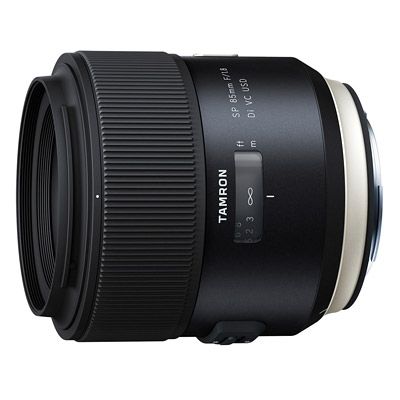 | Tamron SP 85mm f/1.8 Di VC USD Pros: Sharpness, accurate construction, very efficient stabilization Cons: Weight and excessive bulk for my taste Opinion: I have this objective for several months now, combining it with the Nikon of the same focal length and brightness, which I prefer to use, because it is much lighter, when I walk and hike. The Tamron is indeed heavy and cumbersome. But it has a commendable optical performance (TF magazine has judged it superior, and not a little, to the mythical 85 1.4 Nikon), being very clear to the edges even to the most open diaphragms (the top is at 5.6). The stabilization, very effective, allows to use relatively slow times. The blur is pleasant, as is the color rendering. My sample was perfectly calibrated as for focusing. Recommended, if weight and size are not a problem. sent on March 10, 2018 |
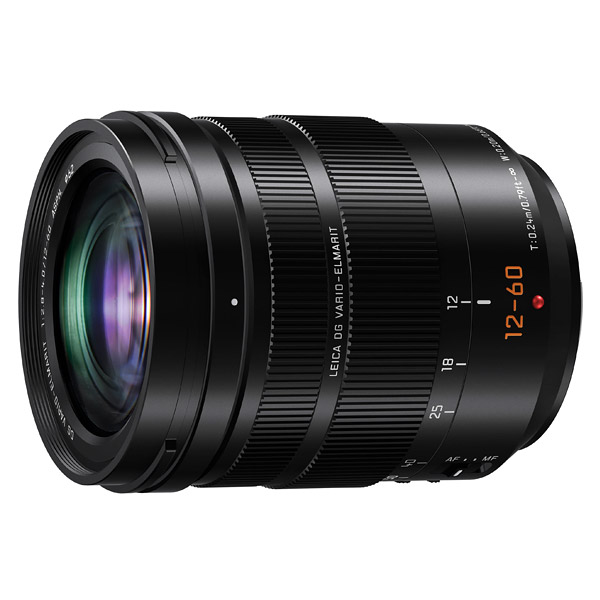 | Panasonic Leica DG 12-60mm f/2.8-4.0 ASPH OIS Pros: Great unit versatility with an excellent quality yield; good price if in kit; stabilization; efficient autofocus. Cons: The brightness fades very quickly, increasing the focal length Opinion: Taken in kit with gh5 I was surprised by the high optical quality, really good at all focal lengths, even at the edges. Reaches the top of the sharpness on the middle diaphragms. Sufficiently light it is very balanced on the gh5. Exceptional, precise and fast autofocus. Unexceptionable stabilization that is added to that of the machine, making video shooting much easier. Color and transparency of the laudable shadows, as per Leica tradition. sent on March 06, 2018 |
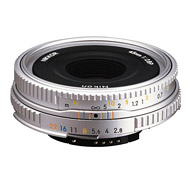 | Nikon 45mm f/2.8 P Pros: optical quality, reduced weight and dimensions Cons: TA is a bit 'soft around the edges, but I think it's normal Opinion: I found it at a high price (silver) but yet again, with the packaging and its beautiful accessories dedicated (UV filter and lens hood, and gray bag). It fits perfectly with my Df silver with which formidable pairing shape for portability and quality of the yield, in addition to the undoubted aesthetic pleasure. The clarity is superb already af: 4 and reaches its peak at f: 8, with indistinguishable edges of the center in terms of sharpness. The contrast is high, obviously with a scheme to 4 lenses and perhaps is not the best for portraits, unless you want to enhance wrinkles etc .. In the landscape, even urban, is excellent from every point of view, even when rendering the color. The MF with my Df does not create any problem and is very precise (the confirmation signal in viewfinder is unnecessary in good light conditions). sent on March 05, 2017 |
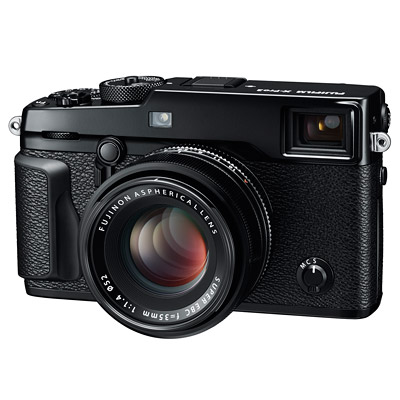 | Fujifilm X-Pro2 Pros: rugged construction, portability, quality of the files, the viewfinder Cons: poor battery life Opinion: The own for almost a year and use, along with a EX2s, almost exclusively for travel reportage, urban landscape and street, only with fixed lenses (16,23,35,56mm). For the natural landscape, however, I prefer to use my Nikon Df, which I think I ensure wider tonal gradations and delicate shades and, in general, cleaner files. Fuji X-Pro2 is a very robust and solid machine, precise, easy to use and highly customizable (once you understand all the functions provided in the menu). With his bright optical viewfinder Frames (excludable when you want an electronic style vision) is very reminiscent of Leica, even if the manufacturer has chosen not to emulate the proverbial simplicity and practicality, providing a flood of electronic functions which may initially scare. In fact, once you make your own choices, everything becomes simple and use this device becomes easy and very profitable, given the extreme overall quality of the files, which helps the extraordinary resto the fixed optical mentioned above. Contrary to what has been said by others, I prefer to use it only shooting in RAW and then developing the files with PN and LR. Although the greatest number and thus the smaller the pixels, finally, I did not notice, at least up to 3200 ISO, more noise with respect to the sensor EX2s.rn rn sent on January 03, 2017 |
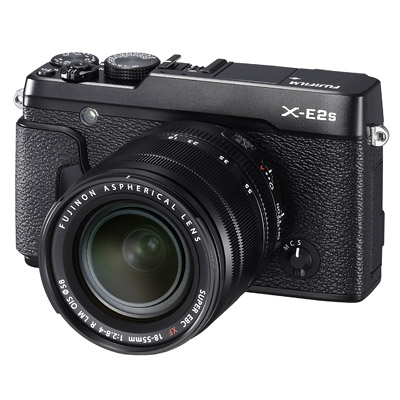 | Fujifilm X-E2S Pros: file quality, rugged construction, light weight and portability Cons: is missing the orientation features Opinion: Jack used with 18-55. Compact and light is the ideal companion when you want to move and shoot in fluency. Allows fast action, making accurate and fast focus, correct exposures and everyway highly customizable and, above all, a quality of the file (I only shot in RAW, which stretch in LR and / or PN) simply amazing and comparable to what I allow my nikon FF. The only drawback, the fixed screen. In any case a highly advisable device and able to give enormous satisfaction, especially in the photograph "street". sent on September 19, 2016 |
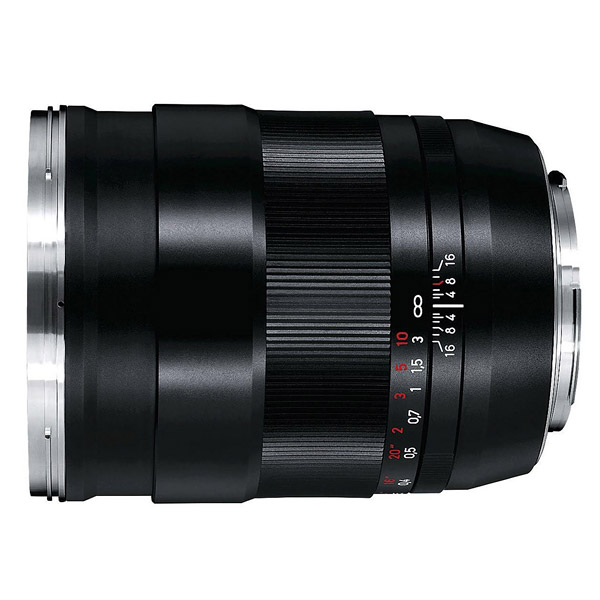 | Zeiss ZE/ZF.2 Distagon T* 35mm f/1.4 Pros: impeccable construction, as zeiss tradition; exceptional optical quality Cons: weight, size, price Opinion: I have this light now for a year, having preferred the Zeiss f: 2 after a field test, and use with Nikon Df and 810. It has many drawbacks, such as weight, excessive dimensions, price, a curvature of field appreciable Aperture 1,4 and 2; but, being careful in focheggiatura, gives absolutely fantastic images, far more attractive than allow others 35mm; not so much for the sharpness (still excellent throughout the golf f: 2.8 and up), but because of the color rendering, the ability to enter into the shadows, following the dispute which assures the filming scenes for the pleasure the focus. It also gives an absolute pleasure when handling it and use it. Of course it is not very suitable when you need a particular speed of action, because with reflex today the focus manually is not easy. In my opinion a way that gives a lot of satisfaction. For the diaphragms 1,4 and 2, in which the sharpness at the center is high however, also it allows a considerable creativityA just taking advantage of the field curvature is suffering. sent on February 10, 2016 |
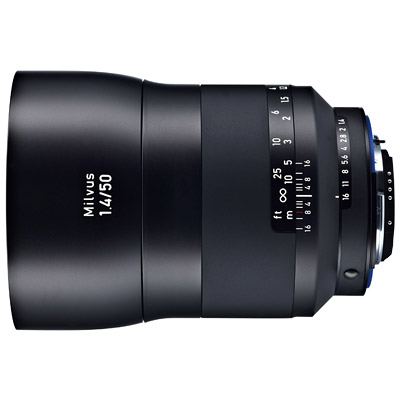 | Zeiss Milvus 50mm f/1.4 Pros: sharpness, aberration correction, contrast, light transmission Cons: weight, size, price Opinion: In the past I had the Planar 50mm 1.4 that has been replaced by this Milvus that now uses the optical design of the Distagon, as the well-known Otus. The weight and dimensions are remarkable, but it is the logical consequence of a construction where metal and glass abound and I have decided to put up, along with the high price (1200 euro with Fowa guarantee), in the name of the search for a higher optical quality that, in fact, was absolutely fantastic and far superior to its predecessor, in all openings. The sharpness, the Nikon Df and even more with the Nikon 810 (are my machines) it is superb even at the widest apertures, with results of pure excellence to intermediate diaphragms, when the yield on the edges really leaves you flabbergasted. But not only the sharpness is excellent, because the transparency and brightness of the scene, as well as the native color rendering, which in my view are a little more that the optical Zeiss boast than the Nikon, here are stillmost exalted. Excellent resistance to reflections and the backlight. Focus ring very soft focus, dust protection, more modern aesthetic, but without sacrificing the aperture ring, metal hood, are other elements that I consider extremely valuable. Ultimately a superlative goal, recommended for those who do not need the fastest auto focus and not lose heart in front of the higher weights consueto.rn sent on January 31, 2016 |
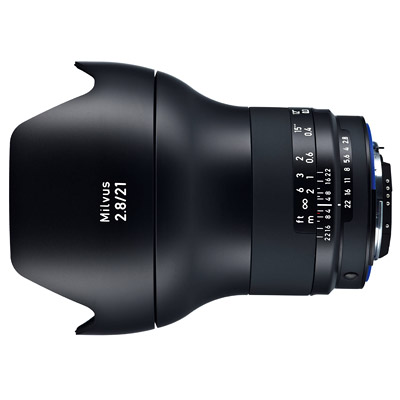 | Zeiss Milvus 21mm f/2.8 Pros: Extremely robust construction, optical quality, resistance to reflections, presence aperture ring and scale of the depth of field Cons: weight and high price Opinion: I could try this light for a short time, but enough to decide not to replace my Zeiss 21 zf2.rnLa made, in fact, was exactly the same, as they could possibly be deduced from the number of lenses and groups was identical (16 elements 13 groups) .rnIn practice it thinks that compared to the decommissioned 21mm essentially have changed the building (the current one seems even more solid), aesthetics (which may or may not), the weight (now increased to about 2 ounces) and, for the occasion, the price (of course increased !!!). rnIl 50 / 1.4 and 85 mm / 1.4 mm seems to be the only optics whose optical scheme has been revised. rnFabio sent on January 25, 2016 |
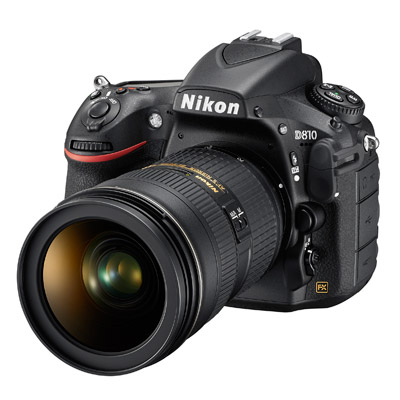 | Nikon D810 Pros: Robust camera, represents the ultimate synthesis and improved over the D800 and D800E. It ensures great clarity without sacrificing dynamic range. Cons: Downsides are inextricably linked to those positive, which are the inevitable consequence: weight, size, noise above ISO 1600, the weight of the files, the need for high-quality optics, the trend moved Opinion: I added this unit to my kit selling one of my two DF once occurred the need to cope with a job that requires large prints. In the past I have also had the D610 and D750 which now uses my daughter. I think it is a specialized unit, compared to the D610 and D750, more manageable by an amateur and more in keeping with the general needs of those who prefer the vision of their photos to display or print A3 +. The Df is considerably higher than in noise management, but holds much less well A1 format, but that is the field in which the D810 makes the difference. We are always there: once with a Nikon F was enough to change the type of film and you could face many different types of photography (the difference was with the medium and large format); Today is the sensor, but the builders are careful not realize interchangeable. However, this D810 ensures print quality equal to 6x7 on film. Color rendering, dynamic range, sharpness, autofocus, actionable, precisioThey the exposure, body building are all highly commendable. Finally, a very good airplane and is very rewarding both for the landscape and for the studio photographer, if in need of a higher quality than what is allowed for physical reasons the sensors less dense. sent on January 21, 2016 |
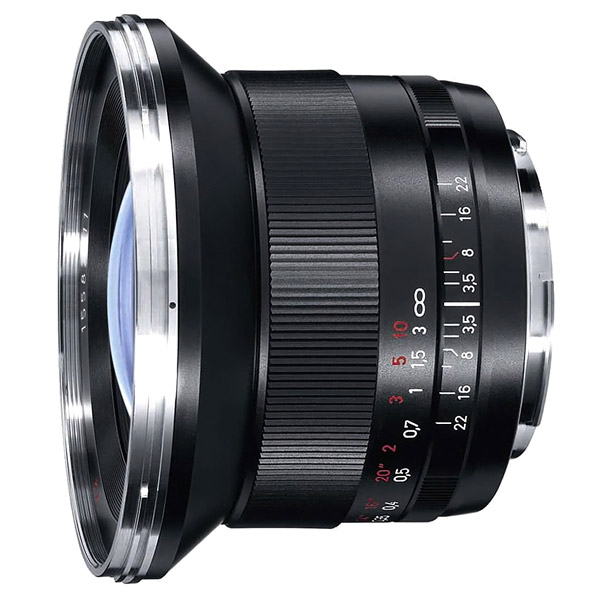 | Zeiss ZE/ZF.2 Distagon T* 18mm f/3.5 Pros: optical quality and constructive Cons: high cost Opinion: I own this perspective a little over a month and I seem to be in line with the usual quality "zeiss". The mechanical construction is that of the old days which ensures enjoyment obtained from the move dials focus and aperture which is certainly not essential for the purpose of photography, but still represents a plus for those who, like me, a photographer since 1969 . The optical performance is excellent Aperture intermediate, less ta. The color rendering is in the usual magnificent zeiss standards. The resistance to the reflections is far superior to 14-24mm Nikon (which I yielded just for the ease to create reflections in conditions of light just difficult). sent on February 15, 2015 |
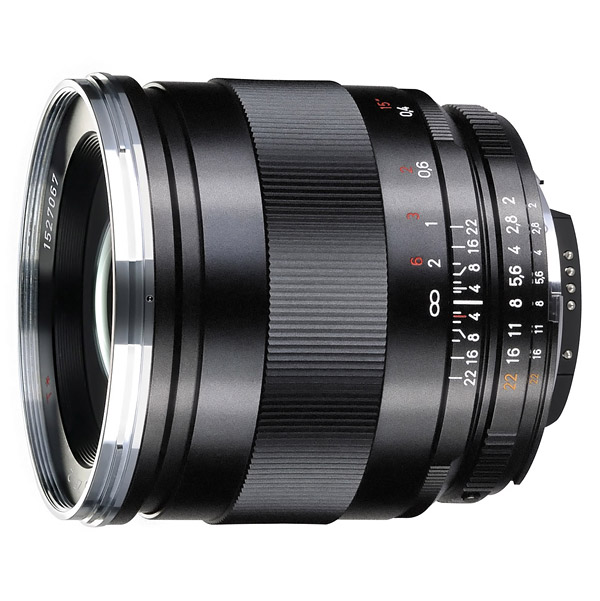 | Zeiss ZE/ZF.2 Distagon T* 25mm f/2 Pros: construction and optical performance Cons: considerable price Opinion: I recently decided to sell my 14-24mm, optical definitely of great quality but in my opinion hardly manageable in light situations not controllable, because of a high tendency to create unwanted reflections. This 25mm, which I took with the 18mm and the 35mm zeiss, I did certainly regret my choice: in addition to its unbeatable mechanical construction that brings me back to the time when I was young and the optics were built with materials now disused The 25mm ensures a remarkable sharpness, even at the edges; a commendable distortion control; one blurred very pleasant; the usual color rendering typical zeiss; transparency in the shadows that really makes a difference and, last but not least, a good control of reflexes. The good results even at the widest apertures allows use even in the reportage. In short, it costs a lot, but worth much. sent on February 14, 2015 |
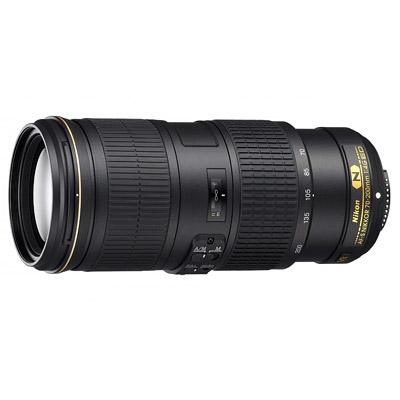 | Nikon AF-S 70-200mm f/4 G ED VR Pros: Superb optical quality overall Cons: Ring Tripod not included Opinion: This is a zoom lens with wide focal length range which, however, has a weight and a footprint not excessive and such as to allow its use even during long trips or trips, always ensuring superb optical performance in all respects (including the resistance to the backlight and a pleasant blur), in particular in terms of sharpness. Also very efficient device to reduce vibration. Recommended to all nikonisti which have not at all costs need of opening f: 2.8. sent on September 03, 2014 |
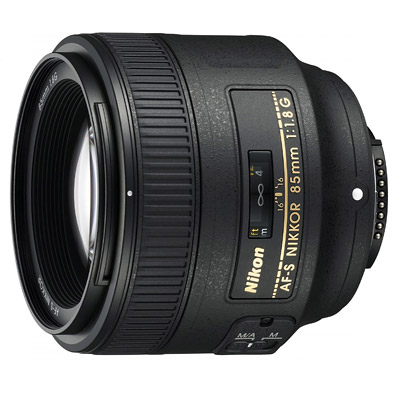 | Nikon AF-S 85mm f/1.8 G Pros: overall optical quality, reduced weight and footprint Cons: apparently leggerina construction, typical of recent goals nikon G series Opinion: In my opinion it is a lens that is a true champion, with an excellent quality / price ratio. The overall optical quality is truly remarkable in every respect, including the yield of focus and backlighting. How many optical G-series is made of materials very different from those of the nikkor one time or the current zeiss zf, but this does not affect the solidity and robustness, as well as the privilege lightly. Recommend to all who do not really need nikonisti aperture f 1.4. sent on September 03, 2014 |
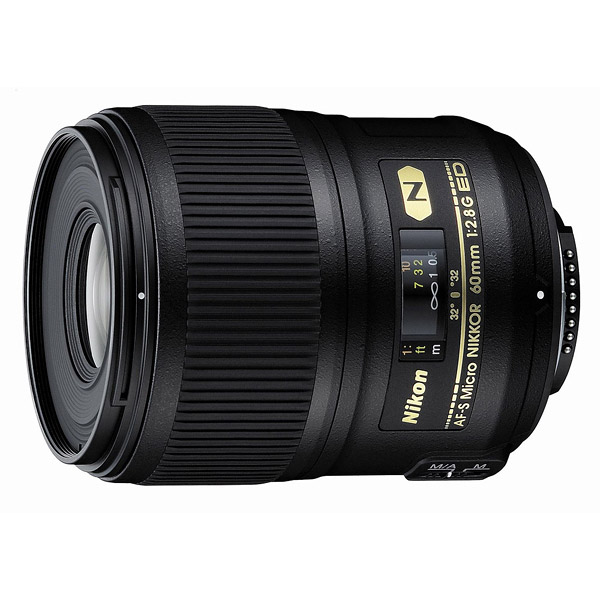 | Nikon AF-S 60mm f/2.8 G ED Micro Pros: optical quality (at the height of his fame) Cons: nothing to say, except for the usual lack of aperture ring, characteristic of the series G Opinion: This is the worthy heir of the nikkor macro that have gradually gone before us. Of course it is a view designed for a specific use and is not the best for the portrait, but also lends itself well to the landscape, because of its indisputably high sharpness. Commendable as a correction of various aberrations, has a high contrast and excellent resistance to the backlight, although it is always advisable to use the long lens hood which is fitted. It has an excellent price-quality ratio. sent on September 03, 2014 |
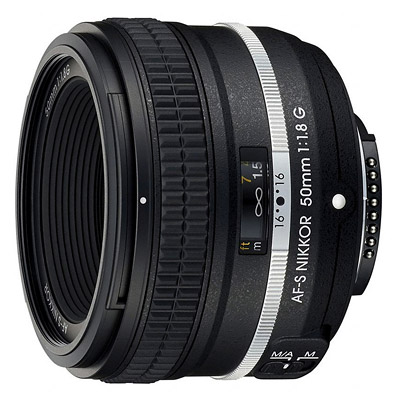 | Nikon AF-S 50mm f/1.8 G Special Edition Pros: overall optical quality, light weight and easy to handle Cons: nothing to see, except for the absence of the aperture ring Opinion: I bought a kit with the Nikon Df and I was pleasantly surprised by its overall optical quality, as well as by its reduced weight and footprint. In the past I have had a lot of 50mm, even from other brands (including Leitz and Zeiss) and I must say that quest'obbiettivo worth much more than what it costs. Pity about the lack of aperture ring, which would enhance the vintage look. Provides the best of themselves to the intermediate diaphragms, but even at full aperture yield, at least in the center, it is not to be sneezed at. sent on September 03, 2014 |
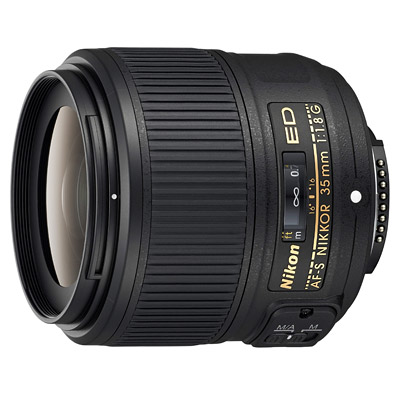 | Nikon AF-S 35mm f/1.8G Pros: excellent optical quality, easy to handle and lightweight Cons: as most of the G-series is solid, but built with materials very different from those used at one time. Lacks the aperture ring. Opinion: Although this lens is in my opinion a true champion in terms of optical performance, always superlative in every respect, including the yield of the focus and tightness in the backlight. It is also lightweight and easy to handle so that you gladly use not only in the reportage in the city, but also in the long hikes in the mountains. The yield at the center is also excellent at f: 1.8. The materials used for construction can turn up their noses, being far removed from what, eg., Homologous zeiss zf, but then the price and weight are benefited, while the optical yield, as already said, remains excellent . Hifi inescapable for those who love fixed lenses and focal length 35mm (and has no absolute need aperture f 1.4). sent on September 03, 2014 |
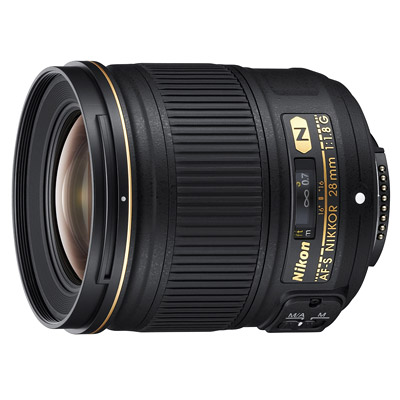 | Nikon AF-S 28mm f/1.8 G Pros: Superb optical quality, both in terms of sharpness as a capacity to hold up to the light. Great focus. Valuable handiness and lightness. Cons: Like all G series lenses lack the aperture ring; the construction is not comparable to that of the corresponding zeiss, but then costs infinitely less. Opinion: What can I say, the optical qualities are absolutely top-notch, unless the construction, in the sense that it conveys the feeling of fluidity (v. Dial manual focus) and solidity of a zeiss. However, it is lighter, easier to handle and much less expensive than the 28 zeiss zf. I am very satisfied and, in my opinion, it is a perspective that would look good in any outfit nikon. sent on September 02, 2014 |
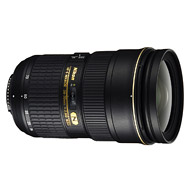 | Nikon AF-S 24-70mm f/2.8 G ED Pros: overall optical quality and very well-kept building Cons: weight and dimensions Opinion: optics that covers most of the requirements, including professional, always responding with great quality, in particular the intermediate diaphragms. (From f: 4.5 to f: 9). It bears also a decent backlight. It is not, however, an objective comfortable to wear "walking", given the very high weight and bulk is not indifferent. In particular, it is, in my opinion, too long and interacts badly, squilibrandoli, with smaller bodies fx (df, d600, 610 d); but it is sufficient to take note and act accordingly. sent on September 02, 2014 |
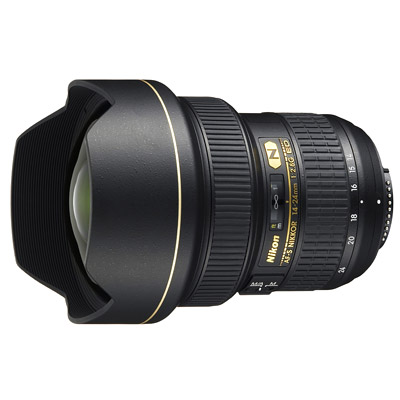 | Nikon AF-S 14-24mm f/2.8 G ED Pros: optical quality construction and cared for Cons: weight and size, very protruding front lens (but I think it was an inevitable choice) Opinion: a zoom fixed opening and with wide excursion in the wide-angle sector that lends itself to many uses, in particular to the landscape, even urban, able to ensure always a commendable optical quality. The focal length less powerful, in my opinion, is equal to 24mm, where the edges behaves a bit 'less well than "brother" 24-70mm (at least mine). It also works well with the 800E, which says a lot about his ability to work out the details. In conclusion inescapable choice for photographers with Nikon equipment, as long as willing to bear the weight (1 kg), really high and said to discourage the use in occasions of long and challenging hikes in the mountains. rnHo also the 21mm Zeiss ZF that, in my opinion, is still higher, mainly because of its greater ability to read the shadows, but I think the logic of things that one can zoom succumb compared to a fixed lens. sent on September 01, 2014 |
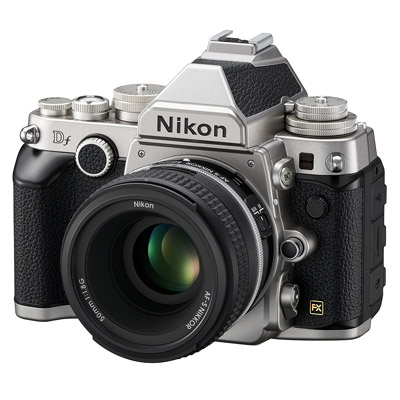 | Nikon Df Pros: construction, weight, quality of the sensor, the viewfinder quality, aesthetics. Cons: lack eyepiece shutter Opinion: Do I have a D610 (which actually uses mostly my daughter) and I changed the D800E with a black Df, to which I then added a second silver body. The replacement of the D800E (beautiful machine) is due to the fact that I decided to limit the size of my prints and, after a series of careful tests, I found that of the 36 plus million pixels and the resulting higher resolution compared to 16 of Df is only noticeable in a clear manner on the A1 format. The A2 is only visible to a keen eye and near. On an A3 + (the format is now practical) need a magnifying glass. In contrast, the sensor assures me Df color rendition and an ability to shoot in low light conditions really commendable. In addition, being a photographer of the old course, with this machine I find myself with my eyes closed, like when I was using my Nikon film and can even be more responsive, also because of the lighter weight and smaller body size. Using my Df only predominantly fixed optical light. I knowthat many did not like it and I must admit that a young man, who grew up with the cars of today, it might be confused and less rapid in action. sent on August 28, 2014 |
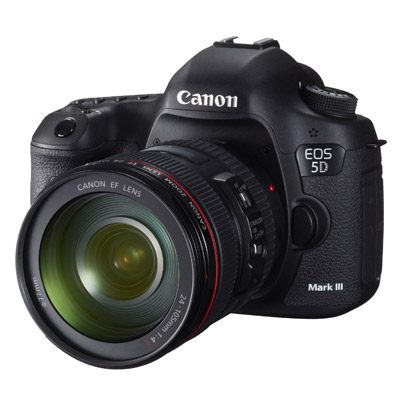 | Canon 5D Mark III Pros: construction, performance and overall quality high-level Cons: the dynamic range has remained largely unchanged over the previous model and canon has not been able to keep up with the competition in this aspect. Opinion: I was among the first to have it in March 2012. Since then I've used it a lot, always with the 5dmk2 (having almost exclusively fixed lenses often use two bodies). It is an eclectic machine, able to cope with every requirement, always ensuring other benefits. Compared to the previous model can be a large or a very small step forward according to the specific needs of the photographer, so the update is said to be necessarily beneficial. Personally, I wanted an improvement in terms of dynamic range and the subsequent recovery of the shadows, something that Canon has been a bit 'and stop back anyway (at least up to ISO 1600) with respect to the sensors and the Nikon D600 and Sony D800, as I have seen in person. sent on January 12, 2013 |
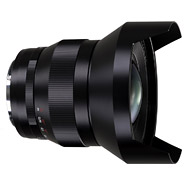 | Zeiss ZE/ZF.2 Distagon T* 15mm f/2.8 Pros: combined outstanding optical quality, as tradition of the house, with impeccable construction, rotate the focus ring offers unique sensations. Cons: weight and high price, but they are typical aspects of zeiss optics Opinion: The optical performance is superb even at the edges and my previous Canon 14mm Type II is released from the comparison (which I have done before buying the zeiss) pretty bad, although it costs a little less than rival. Compared to the Canon will immediately notice the different coloring typical of zeiss, the yield in the center is just over 14 canon while the difference at the edges is rather significant, especially at the widest apertures. The Canon also suffers from an unfortunate aberration, rather unknown to the zeiss (though easily removed in post-production). Distortion correction with the bubble machine is great; very well also correct for vignetting. sent on September 17, 2012 |
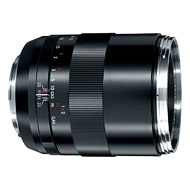 | Zeiss ZE/ZF.2 Makro-Planar T* 100mm f/2 Pros: outstanding optical quality, impeccable construction Cons: none Opinion: I purchased this light recently and was amazed by its optical quality, even at full aperture. Photographer since 1969 and had never experienced anything like that. The sharpness is nothing short of disarming, to the edges. The blur is nice, high contrast, color rendition pleasant. A true gem, certainly expensive, but worth the money. It beats the great canon and its equivalent in a clear manner than even the 70/200 f: 2.8 Type II. It handles well in what is in your hand naturally and focheggia manually without problems thanks to an excellent ring. Obviously it is only recommended for those who, like me, do not hurry in taking. Fabio sent on March 21, 2012 |
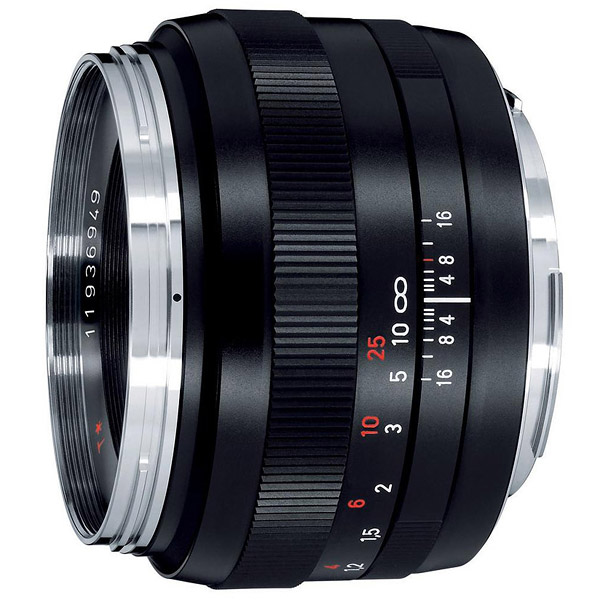 | Zeiss ZE/ZF.2 Planar T* 50mm f/1.4 Pros: excellent optical quality, impeccable construction Cons: made at the edges at the widest apertures a bit 'disappointing Opinion: This is the third fixed lens that I got to replace the two type II canon 16-35 and 24-70. The yield is superb and the object is constructed in such a way that it is a pleasure to use. The focus and color rendition, contrast and sharpness are excellent. However, in a comparison with the canon 50mm f: 1.4, which I have also (though I'm about to sell it) surrendering to the edges in Aperture 1.4 to 2 was lower than in sharpness. A f: 4 are equal and f: 5.6 to 8 prefer the zeiss. The Canon has a much lower construction, but the optical plane is also a champion and a better quality / price ratio, in addition to the automatic focheggiatura. Fabio sent on March 21, 2012 |
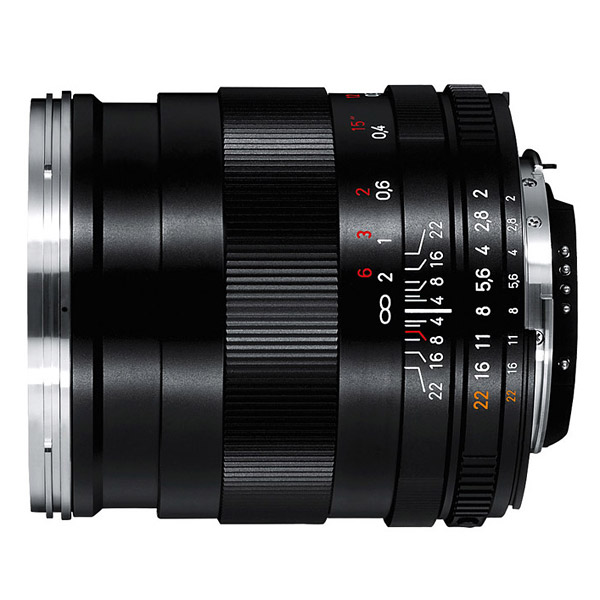 | Zeiss ZE/ZF.2 Distagon T* 28mm f/2 Pros: great optical quality, impeccable construction Cons: none Opinion: I sold the 16-35 type II canon and the canon 24-70 for acute disappointment dates made by the edges, which often penalized my landscapes. I replaced them with three fixed lenses zeiss ze, including 28mm in precisely the question (I already had the 28mm f: 2 of contax film). Even in this case it is a true champion from every point of view. Coast, but the quality of pay, and I think I spent my money well. Even the blurring was a plus, not to mention the resistance to glare. Fabio sent on March 21, 2012 |
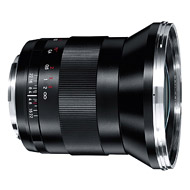 | Zeiss ZE/ZF.2 Distagon T* 21mm f/2.8 Pros: optical quality, impeccable construction Cons: significant weight Opinion: I purchased this light after reading reviews on various sites that extolled the great performance and expectations have been confirmed, and the world has changed compared to my canon 16-35mm and 20 type II that I used previously on a fixed canon Eos 5D markII . Finally my landscapes are razor sharp from edge to edge. The distortion is minimal. The focus is carried out smoothly and precisely via a large ring of the past. A great test of zeiss that exceeds even though the previous 21 zeiss great that I used with a Contax film. It all his money. Fabio sent on March 21, 2012 |
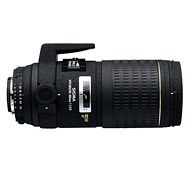 | Sigma 180mm f/3.5 EX HSM Macro Pros: excellent build quality and optical Cons: high price Opinion: I purchased it again after that had risen in price (I think a little over 800 euro) to watch them replaced by the model with the stabilizer. However I must say that it is a view that is a credit to the manufacturer, because of a massive building and cared for and, last but not least, a superb optical quality, from the center to the edges, already af: 4. I use it a lot in the landscape, and also having the 70-200 f: 4 Canon, I must admit that this Sigma is even higher than this but great Canon optics. Very useful for the collar stand. sent on February 11, 2012 |
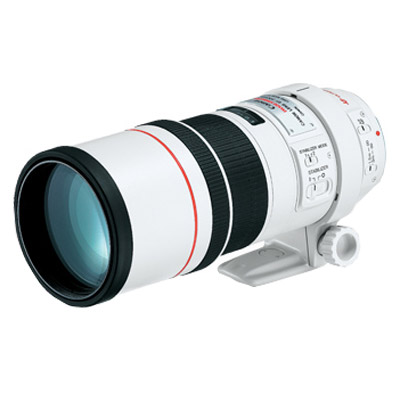 | Canon EF 300mm f/4.0 L IS USM Pros: excellent build quality and optical Cons: stabilizer and noisy AF Opinion: Is not a recent project, but in any case ensures excellent sharpness already at full aperture and up to the edges. The use with satisfaction with both the FF that with the APS-C with which turns into a formidable long fire. Very useful the collar for use with the tripod, remains practical to use even freehand because the efficiency of the stabilizer (although dated). Very nice the focus. The convenient built-in hood. Also good quality / price ratio sent on February 11, 2012 |
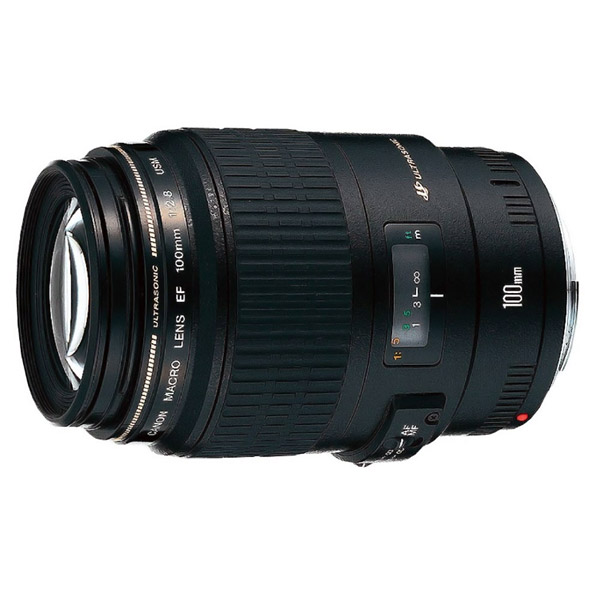 | Canon EF 100mm f/2.8 Macro USM Pros: excellent construction and excellent optical quality Cons: lacks hood, sold separately Opinion: Also possess this perspective for many years and I have to say to be very happy, being able to ensure superb optical quality already at full aperture and up to f: 8, even at the edges. For portraits is a bit 'hard and not very bright, but this may not be that obvious in view that the manufacturer has created as a "macro". Although optimized for close distances, remains excellent even focheggiando infinity. If you do not need additional brightness or can not do without stabilization remains a choice irrinunziabile because of the excellent quality / price ratio sent on February 11, 2012 |
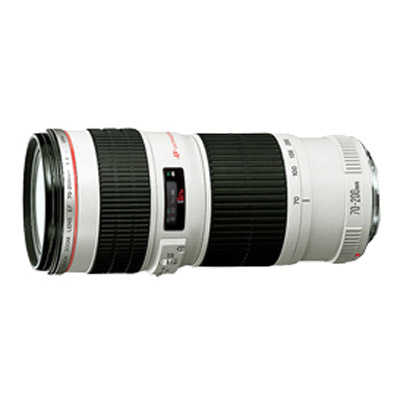 | Canon EF 70-200mm f/4.0 L USM Pros: lightweight, easy to handle, high quality optics and construction that Cons: I could not find fault Opinion: Possess it for many years and I used it and I use it with satisfaction every time I want to go light, while remaining safe to rely on a view of quality. Excellent sharpness at all focal lengths, becomes a bit 'softer only from 170mm up. It is only recommended if you think you can not do without a higher brightness or stabilization, otherwise it is the best choice on the market because of a value for money unbeatable. sent on February 11, 2012 |
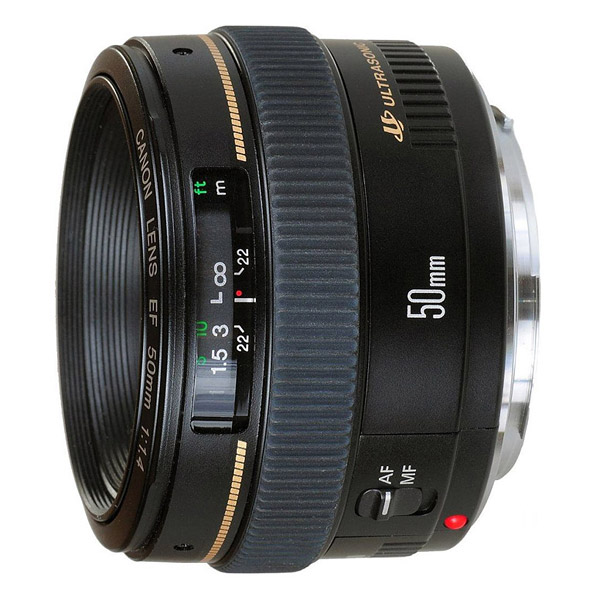 | Canon EF 50mm f/1.4 USM Pros: Compact and lightweight, good build quality and optical Cons: missing the hood, to buy separately; optical quality is not outstanding at the widest apertures Opinion: Although this is an outdated project is a perspective that can be very rewarding, making it very clear to both the center than at the edges, except in the widest apertures. To f: 2.8 Zeiss succumbs than its counterpart, for which, however, is slightly higher at the edges f: 5.6 (at least with the examples that I could try). Also good yield of focus. I often use both fullframe and with APS-C (D7) and it becomes a sensational lens from portrait and / or reports. sent on February 11, 2012 |
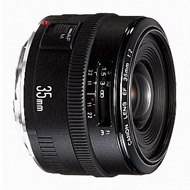 | Canon EF 35mm f/2.0 Pros: optical quality, compact size, high brightness, price Cons: autofocus noisy, blurry not very soft Opinion: I bought this light on second when we were still using film, and I am still surprised, he did not suffer in the transition to the sensor, except for a slight lateral chromatic aberration easily removed via software. Maybe I was lucky this time, but my copy is very sharp, even at the edges. Already good at f: 2, becomes excellent at f: 5.6. I use it with satisfaction on both the full-size with my D7, which turns into a normal a little 'tight. The quality / price ratio is very favorable, although the project has now dated. sent on February 11, 2012 |
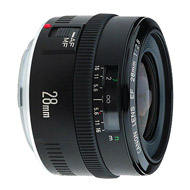 | Canon EF 28mm f/2.8 Pros: compactness, light weight and price Cons: optical quality is not outstanding, especially on full size Opinion: I sold this context, that I bought used, after a few weeks of use. If the APS-C, where it is equivalent to a normal a little 'off, he's doing yet, on the edges of full size they seemed too soft. The 35mm f: 2 Canon, but also cheap, it's an entirely different pasta and literally "eat" this modest lens is not worth more than his money. Today, Canon has introduced an updated version is equipped with stabilizer, we'll see. sent on February 11, 2012 |
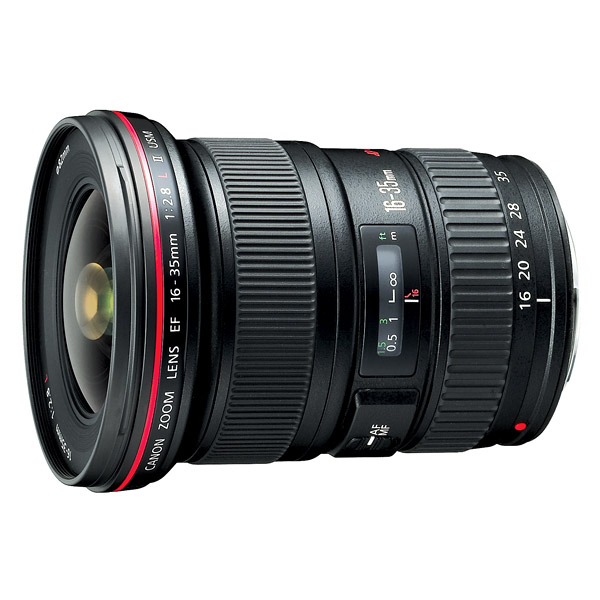 | Canon EF 16-35mm f/2.8 L USM II Pros: building up to the expectations Cons: only good sharpness in the center of the frame and the focal length of 35mm is not outstanding even there. Opinion: I got the 16-35mm already in its first version that I gave away after just three months for its poor quality, version II is much better than the first, but in the end I sold this perspective also, in truth less than its analogous version Nikon and Zeiss (Sony). The sharpness is good only at the center and for my kind of photography are not bearable edges so soft and mixed (are acceptable f: 6.3). The maximum focal my old and cheap Canon 35mm fixed f: 2 has virtually torn this zoom. After selling it (along with the 24-70 f: 2.8, it also, at least for me, disappointing the edges) bought two Zeiss Distagon, the 21mm and 28, as well as the 50mm, and the music has changed so evident ( Certainly there is always the trouble of changing perspective, but when I started to photograph the zoom does not exist or so, so I'm pretty used to). sent on February 11, 2012 |
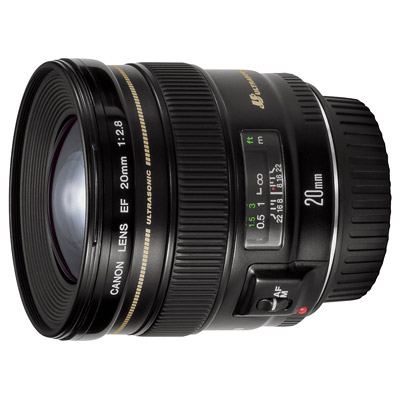 | Canon EF 20mm f/2.8 USM Pros: careful construction Cons: sharpness at the edges insufficient Opinion: I had this view for many years, but then I was forced to sell it, I consider not up to the equivalent from other manufacturers. Especially at the edges with FF sensors need to despair and I think it can only be used with APS-C, which is close to a 33mm, but always excluding photographic genres in which the yield of the angles is important, in my opinion, with the sensor 1.5x in the report can say, however, his. I have replaced with the Distagon 21mm Zeiss and I was really open to another world. This view, in my opinion superb, as well as with FF prevails however also coll'APS-C. sent on February 11, 2012 |
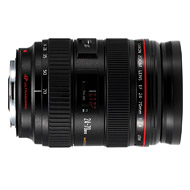 | Canon EF 24-70mm f/2.8 L USM Pros: professional building, the center maintains high optical quality Cons: weight and size, made the edges insufficient Opinion: Maybe I was unlucky and I hit a bad specimen came, but in the end I had to get rid of it because I could not stand the lack of sharpness of the edges (which in my type of photography is rather important) and the significant difference compared to that of the center of the frame. On APS-C, things were better, but I found it more practical to use this to replace it by 15-85. FF on the other hand, I switched to fixed lenses. I read around many tests and comments and, apparently, many have had the same problems, but not all, which suggests a certain lack of homogeneity of the production. sent on February 11, 2012 |
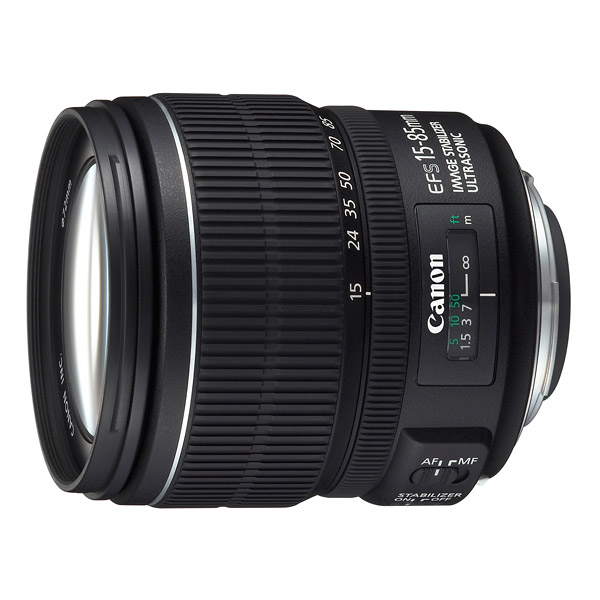 | Canon EF-S 15-85mm f/3.5-5.6 IS USM Pros: because of the focal length is very handy to use when you want to go around with only one approach, good sharpness, excellent stability, good construction. Cons: gives a bit 'at longer focal lengths, the lens hood is missing, given the price, it should have been included. Opinion: I took at least a two thousand photos with this perspective that I use with the D7 when inevitably are forced to use only one body and one lens (or at most two, in which case the next 70/200 f: 4 ), then, is for me a very good all-rounder but obviously can not hold a candle to my other lenses (which are fixed). In my opinion, the best performance is around the diaphragm f: 5.6 (on short focal). At longer focal lengths seems excessively soft and anyway lower than the 70/200 referred to above. In any case it is a perspective that takes advantage of using very raw and then checking with the converter distortion, vignetting, and chromatic aberration. sent on February 11, 2012 |
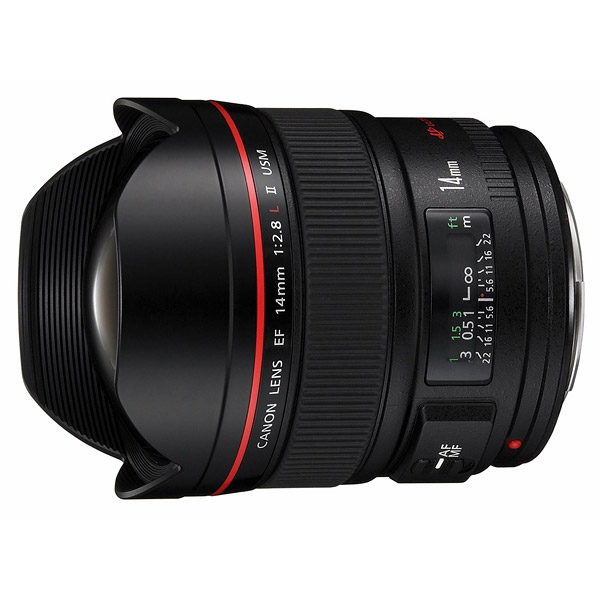 | Canon EF 14mm f/2.8 L USM II Pros: constructed with great care, high sharpness at the center already f. 2.8 Distortion and vignetting very correct, taking into account the focus of which you speak. Cons: The yield on the edge at the widest apertures (up to F: 6.3 - 9.5) is disappointing marked chromatic aberration at the edges. Opinion: In my opinion the performance, though good overall, do not justify such a high price. In a comparison made with the Nikon 14-24 a friend of mine, on the edges wide open have emerged, unfortunately for me, really significant differences in favor of the Nikon, even though it is a zoom lens and optics sold at a price much less. I tested it with both my canon (D5markII and D7) and I can say that on APS C, where it is equivalent to a 22mm, the yield on the frame is much more uniform. sent on February 10, 2012 |
 JuzaPhoto contains affiliate links from Amazon and Ebay and JuzaPhoto earn a commission in case of purchase through affiliate links.
JuzaPhoto contains affiliate links from Amazon and Ebay and JuzaPhoto earn a commission in case of purchase through affiliate links.May Beauty Be Everywhere Around Me